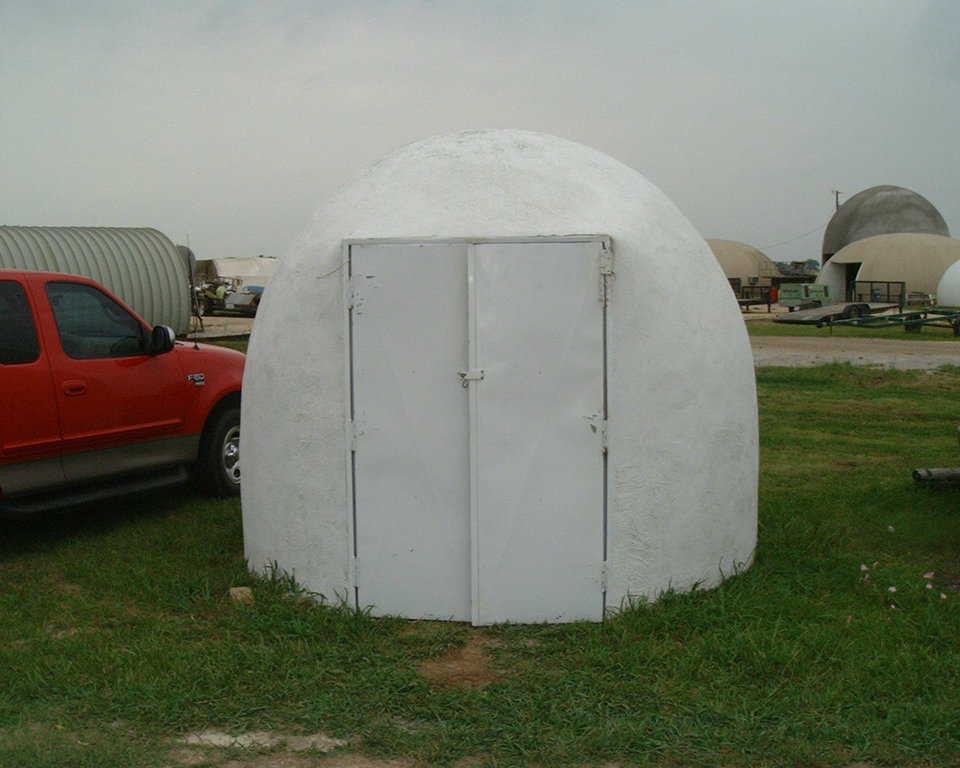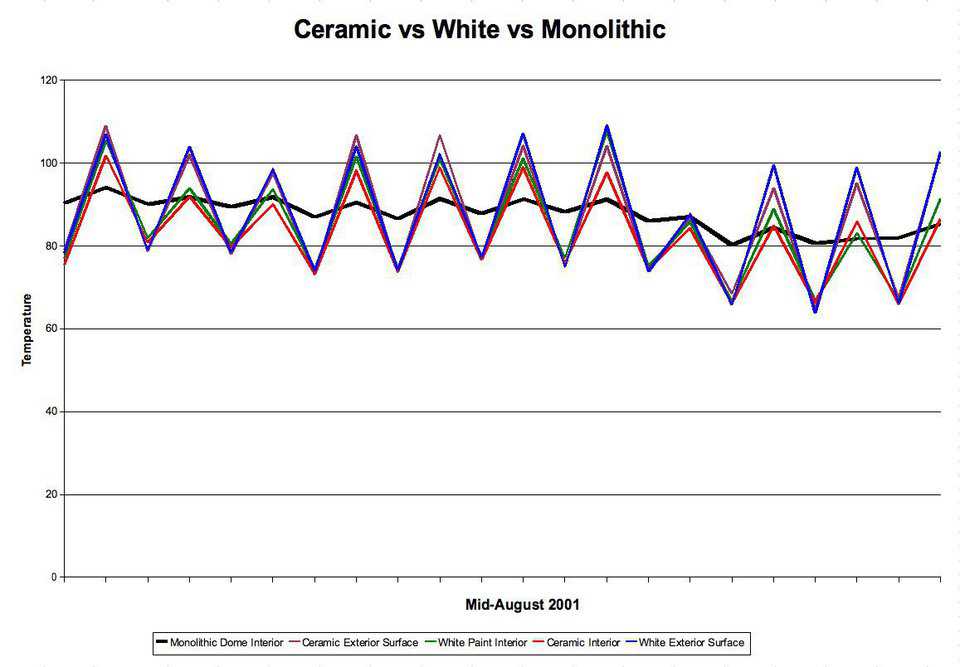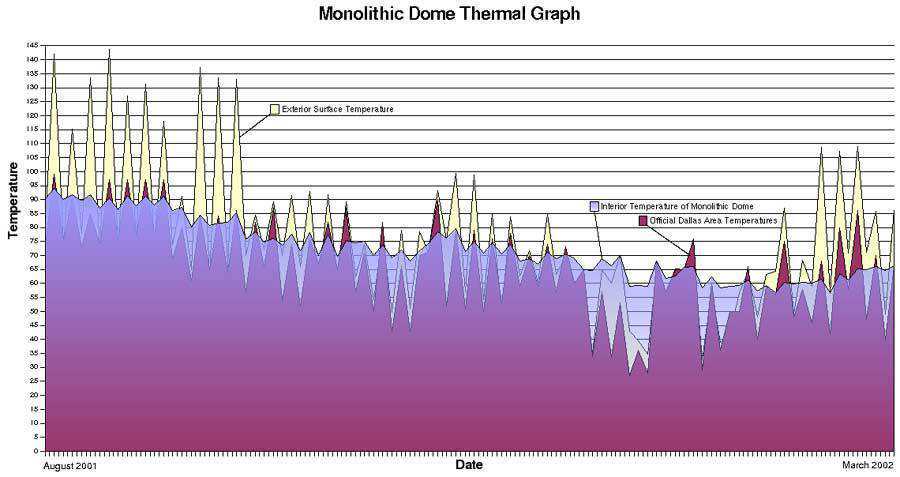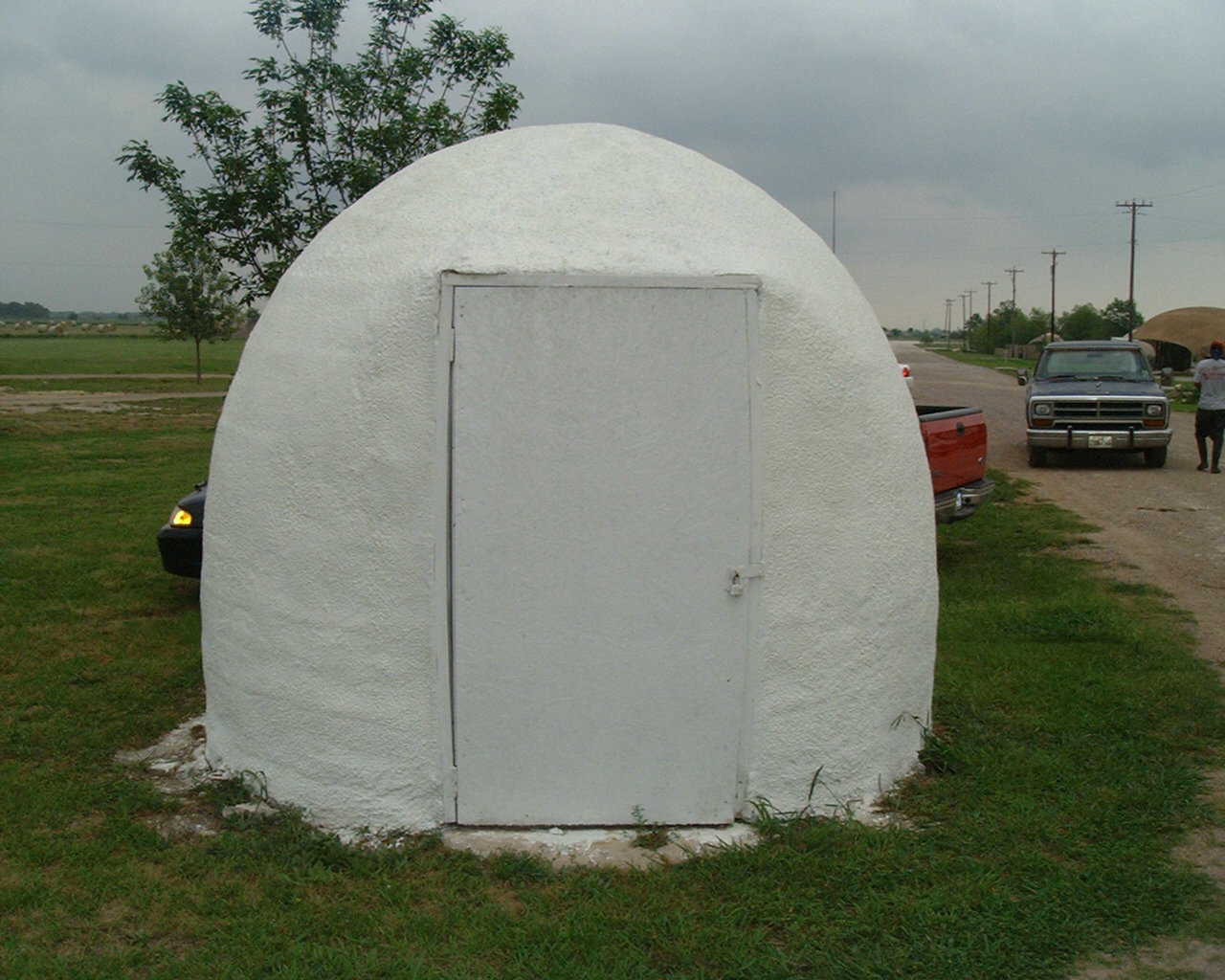Ceramic Coatings
In the late 1970s, a new paint product was introduced as a ceramic coating.
Essentially, a ceramic coating is an acrylic paint filled with ceramic microspheres that claim to prevent heat from crossing through. Special ceramic tiles are used to protect the space shuttle from burning upon re-entering Earth’s atmosphere. Supposedly, ceramic coatings work the same way.
Monolithic applied a ceramic coating on many structures in the mid 1970s – mainly potato storages in Idaho’s valleys. Many of those potato storages were made of galvanized metal. Sunshine, heating their surfaces to extremely high temperatures, increased metal decay.
When we applied a ceramic coating, solar temperatures on the building’s surface dropped dramatically, thus slowing metal deterioration.
At the time, we never considered a ceramic coating as an insulation. We only used it as a way to decrease exterior surface temperatures.
Coating the Ecoshell
As we got more involved in the development of the Monolithic Dome, we forgot entirely about ceramic coatings – until about 6 years ago when we developed the Ecoshell.
Then we tried the coatings again with mixed results.
I hired a Florida man to do a test using a ceramic coating and a plain white paint. We did not use any special labs; consequently our results are not official in any way. We could not prove that ceramic coatings insulated nor reduced exterior temperatures any better than plain white paint.
More Testing
During the 2001 summer, we tried another experiment. A Ceramic Coating Applicator offered to coat a small Ecoshell to prove the insulating ability of ceramic coatings.
Our test consisted of two Ecoshells, both 10’ in diameter, sitting side-by-side. Each was washed and cleaned. Then, one was painted with a good grade of white exterior coating. The other, we turned over to the Applicator for a two-coat system of ceramic coating.
We monitored the interior and exterior temperatures of these uninsulated EcoShells, as well as that of another empty Monolithic Dome with a sandstone-colored Airform on its exterior. We covered its south-facing window with aluminum foil to more closely duplicate the two Ecoshells.
Note: For those of you not familiar with our terminology, an Ecoshell is a 2" to 3" thick concrete shell with no insulation. A Monolithic Dome, on the other hand, has 3 inches urethane insulation sandwiched between its Airform and concrete.
Findings
After several months of consistently monitoring exterior and interior temperatures, we found:
- The structure with the ceramic coating showed that it reflected sunshine slightly better than the structure with the white paint. The operative word here is slightly – at most, a few degrees.
- On the other hand, the Monolithic Dome was largely unaffected by outside temperature changes.
- Solar temperature gain on the surface of the sandstone Airform was higher than that of the white. In direct sun, the surface of the ceramic-coated building reached 105 degrees. The surface of the white paint coating reached 106 degrees. The sandstone Airform surface of the Monolithic Dome reached 114 degrees.
- But the interior temperature of the Monolithic Dome, through a 24-hour cycle, changed less than 6 degrees.
- The interior temperature of the two Ecoshells stayed within a few degrees of the exterior temperature as it cycled. In other words, the structures experienced an approximate 20-degree temperature change, which is exactly what the atmosphere did.
Bruco, our caterpillar-shaped Monolithic Airform Manufacturing facility, has been covered with various colors of metal cladding. It is interesting to note the significant temperature differences on its surface during a very hot day, in direct sunlight and an outside air temperature of 105 degrees F.
Exterior Metal Temperatures:
- The white metal – 108 degrees
- The off-white – 114 degrees
- The sandstone was hotter, followed by the copper and then the green at 142 degrees.
- Black – slightly hotter than the green.
We measured no difference on the inside, since Bruco is insulated with 3 inches of polyurethane foam.
I am convinced:
The lighter-colored fabric (white being the best) generates more savings in cooling costs, even with urethane foam. There is little doubt that the surface degrades more slowly if it is kept cooler.
Surface color makes a huge difference on the inside of a building. This is especially true if there is little or no building insulation. It even makes a small difference on the best insulated buildings – Monolithic Domes.
As can be seen from the graphs, there is little difference in temperature between the white paint and the ceramic coatings. Under no conditions can the ceramic coating be called an insulation. It is simply a reflective surface.
Editor’s update 09-17-02: The Federal Trade Commission (FTC) has ruled against companies that make claims that their paints have insulative value. At http://www.ftc.gov/opa/2002/04/kryton.htm the formal complaint, agreement and other documents can be viewed.

Ecoshell coated with white exterior paint — 10-foot EcoShell painted with a good grade of white exterior paint. (David South, Jr.)

Ceramic vs White — This graph is typical of all data gathered during the summer 2001. This data does not take into account any temperature measurement errors. Our thermometers were not calibrated. Please allow a 2-3 degree variation in the readings. (David South, Jr.)

Thermal Graph — Sample of exterior and interior temperatures taken on a Monolithic Dome during summer 2001. Interesting to note are the steady interior temperatures during the hottest part of the Texas summer. (David South, Jr.)
